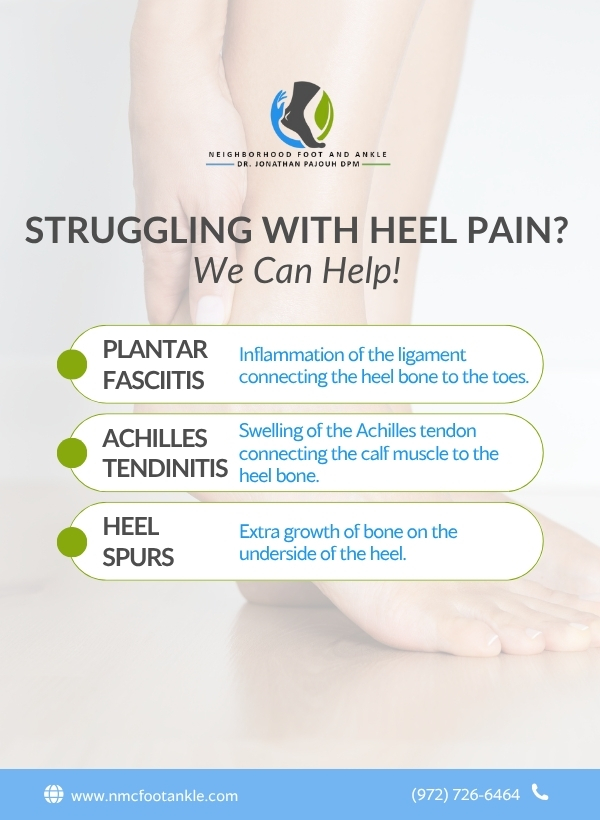
The Ultimate Guide to Overcoming Heel Pain and Finding Relief
Did you know that nearly 10% of people experience heel pain at some point in their lives? This common issue can disrupt your daily routine, making every step uncomfortable and joyless. Whether from prolonged standing, inadequate footwear, or an underlying medical condition, heel pain is not just an inconvenience. It's a signal from your body that needs attention. In this comprehensive guide, we’ll delve into the different causes of heel pain, including plantar fasciitis, Achilles tendinitis, and heel spurs. Additionally, we’ll provide you with actionable strategies to manage and treat your heel pain effectively. By understanding the underlying factors contributing to your discomfort, you'll be empowered to take steps towards relief and reclaiming your active lifestyle.
Understanding Heel Pain: A Closer Look
Heel pain is a multifaceted issue that can stem from various causes. Among the most commonly reported conditions are:
1. Plantar Fasciitis: This is characterized by inflammation of the plantar fascia, a thick band of tissue that runs across the bottom of your foot, connecting your heel bone to your toes. People with plantar fasciitis usually experience a sharp, stabbing pain in the bottom of the foot near the heel, especially during the first steps in the morning or after prolonged periods of sitting.
- Causes: Overuse from activities that put stress on the heel, such as running or standing for long periods, obesity, and flat feet or high arches are significant contributors to this condition.
- Treatment Options: Ice therapy, stretching exercises, physical therapy, custom orthotics, and anti-inflammatory medications can help alleviate pain and inflammation. In severe cases, a doctor may recommend cortisone injections or surgery.
2. Achilles Tendinitis: This condition involves irritation and inflammation of the Achilles tendon, which connects the calf muscles to the heel. It's common among runners and individuals who engage in physical activities that require sudden increases in intensity.
- Symptoms: Those with Achilles tendinitis may feel tenderness, stiffness, and pain along the back of the heel and calf, particularly in the mornings.
- Prevention and Treatment: Rest, ice, compression, and elevation (RICE), along with stretching and strengthening exercises, are critical in treatment. Proper footwear and orthotic devices may also provide support.
3. Heel Spurs: Heel spurs are bony protrusions that develop on the underside of the heel bone, commonly associated with plantar fasciitis. They occur when calcium deposits build up, typically as a result of repetitive stress on the foot.
- Identification: Often, heel spurs don't cause significant pain unless they irritate the surrounding soft tissue, but they can make associated conditions worse.
- Treatment: Similar to plantar fasciitis, treatments include rest, ice, stretching, and possibly custom orthotics to alleviate pressure off the heel.
Lifestyle and Prevention Strategies
To effectively manage heel pain and prevent its recurrence, consider the following lifestyle modifications:
- Invest in Proper Footwear: Shoes with adequate cushioning and arch support can make a significant difference in heel comfort. Avoid going barefoot or wearing high heels for extended periods.
- Maintain a Healthy Weight: Excess weight can add unnecessary stress on your feet. A balanced diet coupled with regular exercise can help maintain an ideal weight.
- Incorporate Regular Stretching: Stretching your calf muscles and plantar fascia can improve flexibility and reduce stress on your heel. Simple exercises performed daily can offer long-term benefits.
- Cross-Train for Fitness: If you’re an avid runner or athlete, consider cross-training to break the repetitive strain. Low-impact activities like swimming or cycling can provide a workout without stressing your heels.
When to Seek Professional Help
While many cases of heel pain can be managed at home, some situations warrant professional evaluation. Seek medical advice if:
- Pain persists for several weeks despite self-care efforts.
- Symptoms intensify or become debilitating.
- You notice swelling or redness around the heel.
- Pain is accompanied by fever or other unusual symptoms.
Conclusion - Where Do We Go From Here?
Heel pain is a common yet complex issue that can significantly affect your quality of life. By understanding its various causes and implementing proactive measures, you can effectively manage and alleviate discomfort.
Schedule Your Appointment
Dr. Pajouh can guide you in creating a personalized treatment plan that caters to your unique needs. Schedule your appointment today. Contact Us – Reconstructive Podiatric Foot & Ankle Surgeon, Dallas TX
